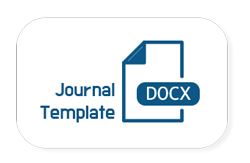ASSESSMENT OF CRYPTOGRAPHIC KEY GENERATION SYSTEMS USING DREAD AND STRIDE THREAT METHODOLOGIES
DOI:
https://doi.org/10.47390/issn3030-3702v3i3y2025N03Keywords:
cryptographic key generation, DREAD methodology, STRIDE methodology, risk assessment, threat analysis, information security, mathematical modelingAbstract
This article presents a comprehensive assessment of cryptographic key generation systems using the DREAD and STRIDE threat methodologies. The article concludes by highlighting the importance of these methodologies for developing secure cryptographic systems and outlines future directions for refining threat models using real-world data and predictive analytics.
References
1. Shostack, A. Threat Modeling: Designing for Security. Wiley, 2014.
2. Schneier, B. Applied Cryptography: Protocols, Algorithms, and Source Code in C. John Wiley & Sons, 1996.
3. Naik, N., & Jenkins, P. “Towards Analysis of Threat Modeling of Software Systems: A Comparative Study.” Springer, 2024.
4. Microsoft Corporation. “The STRIDE Threat Model.” Retrieved from [Microsoft Documentation], 2003.
5. OWASP. “DREAD Risk Assessment Model.” Retrieved from [OWASP Documentation], 2023.
6. Khan, R., McLaughlin, K., Laverty, D., & Sezer, S. STRIDE-based threat modeling for cyber-physical systems. In 2018 IEEE PES Innovative Smart Grid Technologies Conference Europe (ISGT-Europe) (pp. 1-6). IEEE, 2018. https://doi.org/10.1109/ISGTEurope.2018.8571516
7. Hussain, S., Kamal, A., Ahmad, S., Rasool, G., & Iqbal, S. Threat modelling methodologies: A survey. IEEE Access, 9, 4422-4445, 2021. https://doi.org/10.1109/ACCESS.2020.3047368
8. Stallings, W. Cryptography and Network Security: Principles and Practice. Pearson, 2020.
9. Mitropoulos, F., & Spinellis, D. “Threat Modeling Methodologies for Cryptographic Systems.” ACM Computing Surveys, 54(4), 1-32. 2022.
10. Naik, N., Jenkins, P., & Grace, P. “A Comparative Analysis of Threat Modelling Methods: STRIDE, DREAD, VAST, PASTA, OCTAVE, and LINDDUN.” TechRxiv, 2024.
11. Omotosho, A., et al. “STRIDE-Based Cybersecurity Threat Modeling, Risk Assessment and Mitigation for IoT-Enabled Precision Agriculture.” arXiv preprint arXiv:2201.09493, 2022.
12. Pauget, F., Lacombe, A., & Grigoleit, F. Strengthening cryptographic key derivation using proof-of-work. Journal of Information Security and Applications, 54, 102562, 2020. https://doi.org/10.1016/j.jisa.2020.102562
13. Kuznetsov, O., Zakharov, D., & Frontoni, E. “Deep Learning-Based Biometric Cryptographic Key Generation with Post-Quantum Security.” Multimedia Tools and Applications, 2023.
14. Scandariato, R., Wuyts, K., & Joosen, W. A descriptive study of Microsoft's threat modeling technique. Requirements Engineering, 20(2), 163-180, 2015. https://doi.org/10.1007/s00766-013-0195-2
15. Labunets, K., Paci, F., Massacci, F., & Ruprai, R. An experiment on comparing textual vs. visual industrial methods for security risk assessment. In 2017 IEEE International Conference on Software Quality, Reliability and Security (QRS) (pp. 105-112). IEEE, 2017. https://doi.org/10.1109/QRS.2017.20
16. Amini, P., Araghizadeh, M. A., & Azmi, R. A survey on adversarial attacks and defenses in text classification. International Journal of Machine Learning and Cybernetics, 10(10), 2059-2069, 2019. https://doi.org/10.1007/s13042-019-00931-8
17. Nurullaev M.M. “Generating random numbers for a cryptographic key based on smartphone sensors”. International Scientific and Practical Conference on “Modern Problems of Applied Mathematics and Information Technology (MPAMIT2022)” AIP Conf. Proc. 3004, 060014-1–060014-5; 2024. https://doi.org/10.1063/5.0199570
18. Staat, P., et al. “Intelligent Reflecting Surface-Assisted Wireless Key Generation for Low-Entropy Environments.” arXiv preprint arXiv:2010.06613, 2020.
19. Nurullaev M. M. “Functions and their mechanisms for generating cryptographic keys and random numbers,” AIP Conference Proceedings 2969, 2024. (AIP Publishing, Melville, NY). https://doi.org/10.1063/5.0181797.
20. Tete, S. B. “Threat Modelling and Risk Analysis for Large Language Model (LLM)-Powered Applications.” arXiv preprint arXiv:2406.11007. 2024.








